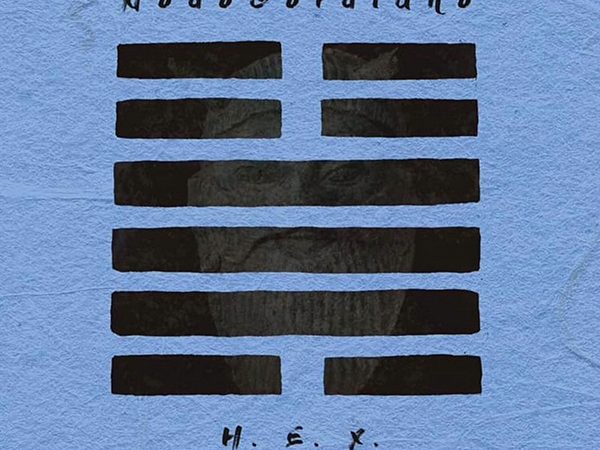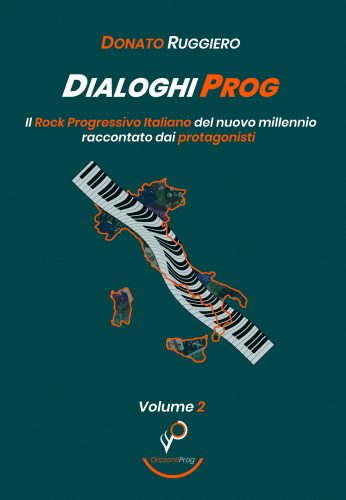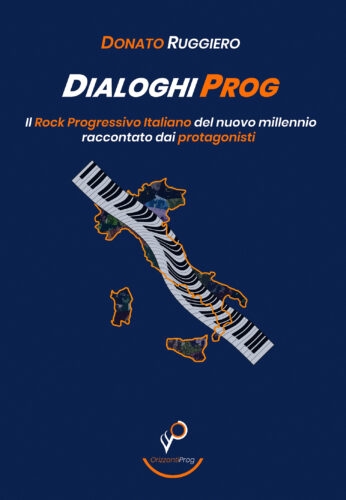 ELECTRIC MUD
ELECTRIC MUD
The Inner World Outside (2022)
Timezone Records
Senza fine la vena creativa degli Electric Mud. Ecco, dunque, tornare con un nuovo album, a soli due anni da “Quiet Days on Earth”, il progetto Cinematic Prog Art tedesco creato dal bassista Hagen Bretschneider: The Inner World Outside.
In questa occasione, accanto al “padrone di casa”, troviamo ancora il “fido” Nico Walser (compositore, chitarra, sintetizzatori, campionamenti) e i nuovi collaboratori Timo “Timook” Aspelmeier (compositore, rhodes, hammond, sintetizzatori, piano, batteria, rumori), David Marlow (compositore, piano, percussioni, sintetizzatori) e Judith Retzlik (violino, viola, violoncello, voce).
Essenza cinematografica, elementi sinfonici, sperimentazione elettronica, momenti onirici e paesaggi incantati, textures chiaroscurali, tutto affiancato da frangenti classici in cui archi e piano lasciano sognare ad occhi aperti. Punto di forza, ancora una volta, la qualità della proposta, delle composizioni e dei suoni. E, rispetto a quanto offerto con “Quiet Days on Earth”, il progetto, grazie anche alla formazione ampliata, dona qualcosa in più, allarga i propri orizzonti sapientemente e coraggiosamente.
Affascinante l’artwork di Andrea Weiß, nella sua quiete di un paesaggio che sembra immobile (anche se il fumo che fuoriesce da quella ciminiera sulla destra ci suggerisce tutt’altro).
Arriva da molto lontano Exploring the great wide nothing, impalpabile, vacua. Gli Electric Mud non hanno fretta di mettere sul tavolo tutte le proprie carte e decidono per un gioco d’attesa, anche se con un crescendo solenne. Solo verso la fine le corde di Judith Retzlik mettono “il naso fuori dalla porta”, sofficemente.
Scrosci di pioggia bagnano le nostre vesti nelle prime battute di The fear within. Poi ci pensano le calde tastiere di Walser e Aspelmeier ad asciugarci con il loro abbraccio vellutato. E quando i tasti di incontrano il flauto tutto si fa poetico. Ed è sempre Walser a “tirare” il brano, anche quando lo stesso lambisce territori jazz. A seguire tutto si apre sinfonicamente, epicamente, con toni scuri che vengono trattenuti e sviluppati poco oltre, meno enfatici ma non per questo meno funzionali.
“Regale” l’avvio di Around the mind in 80 lies, prima che le ritmiche inizino il loro “saltello” vivace (molto ben presente il basso di Bretschneider), arricchito di tasselli tesi. Tutto lascia presagire una deflagrazione e, invece, gli Electric Mud fanno una “inversione a U” affidando il tutto alle corde folkeggianti di Walser. Suggestivo. A seguire brevi lampi di follia, con tanto di voci sussurrate, e poi la ripresa di un cammino in punta di piedi che sfocia in un momento rock, con tanto di assolo infuocato.
Opprimente, funerea, quasi jaculiana, emerge Those who leave the world behind. Un gorgo nerissimo che repentinamente svolta di netto, tramutandosi in allegra ballata medievale. E quando l’organo “fa il verso” alla melodia, tutto si fa ancor più affascinante, prima di avanzare spediti con guizzi che lambiscono anche territori PFM.
Struttura piuttosto particolare, quasi priva di una forma ben definita, quella di Guardians of the weather machine. Dall’avvio, in cui corde ed elettronica avanzano ponendo strati di tensione su altri strati di tensione, ai momenti che si muovono tra Nine Inch Nails e Prince, sino alla “caduta” drammatica tra le note degli archi di Judith Retzlik, tutto è ben costruito e si lascia vivere piacevolmente.
Soffice, carezzevole il piano di Marlow che ci dà il benvenuto in Silent stranger suite. Anche quando entrano in scena i sintetizzatori e gli archi, il senso di pace interiore non muta minimamente. E quando tutto viene lasciato nelle mani delle corde mediterranee della chitarra, l’atmosfera si fa ancora più delicata e poetica. Ormai sei tra le sue braccia, cullato maternamente, quando uno schiaffo d’organo giunge a tirarti giù con forza. Quanto segue è un parziale ritorno alle sensazioni iniziali, un po’ più ricche e più tese, a tratti ipnotiche, con l’arco della Retzlik, in alcuni momenti dal tocco alla Giusto Pio, sublime nel suo intervento.
Un tocco esotico e misterioso caratterizza le prime battute di Sérotonine. Poi tutto si fa flebile, leggero, a tratti new age. E con l’ingresso dell’arco, ben cinto dall’elettronica, l’episodio si riveste di una poesia struggente, leggermente Roz Vitalis, prima di chiudere sinfonicamente. Senza dubbio uno dei momenti più intensi dell’album.
Suspense e tensione crescenti nelle note del piano che ci introducono in Descent into the forsaken valley. E anche quando entrano in scena l’elettronica e le corde, compattamente, tutto acquista una nuova fisionomia ma senza cedere sul fronte dello stato d’animo. E, improvvisamente, dopo aver dato un piccolo saggio jazz, il piano di Walser lascia il campo a dei tasti sixties e acidi. Ma tornerà ben presto a reimpossessarsi della scena, con classe.
Moving on. Il commiato è dolce, malinconico, e sgorga dalle dita di Marlow, poggiate delicatamente sul piano.
Si chiude così una nuova prova notevole del progetto teutonico. Una garanzia.
ENGLISH VERSION

ELECTRIC MUD
The Inner World Outside (2022)
Timezone Records
Electric Mud‘s creative vein is endless. Here, then, comes back with a new album, just two years after “Quiet Days on Earth”, the German Cinematic Prog Art project created by bassist Hagen Bretschneider: The Inner World Outside.
On this occasion, next to the “master of the house”, we find again the “trusty” Nico Walser (composer, guitar, synths, field recordings) and the new collaborators Timo “Timook” Aspelmeier (composer, rhodes, hammond, synths, piano, drums, noises), David Marlow (composer, orchestral programming, piano, synth, percussions) and Judith Retzlik (violins, violas, cellos, voice).
Cinematic essence, symphonic elements, electronic experimentation, dreamlike moments and enchanted landscapes, chiaroscuro textures, are all flanked by classical moments in which strings and piano let you daydream. The strong point, once again, is the quality of the proposal, the compositions and the sounds. And, compared to what was offered with “Quiet Days on Earth”, the project, thanks also to the enlarged line-up, gives something more, widens its horizons wisely and courageously.
Fascinating the artwork by Andrea Weiß, in its quietness of a landscape that seems motionless (even if the smoke coming out from that chimney on the right suggests something else).
Exploring the great wide nothing comes from far away, impalpable, vacuous. Electric Mud are in no hurry to put all their cards on the table and decide for a waiting game, even if with a solemn crescendo. It is only close to the end that Judith Retzlik’s strings “stick their nose out of the door”, softly.
Rain showers wet our robes in the first bars of The fear within. Then, Walser and Aspelmeier’s warm keyboards dry us with their velvety embrace. And when the keys meet the flute everything becomes poetic. And it is Walser again who “pulls” the piece along, even when it touches on jazz territory. Then everything opens symphonically, epically, with dark tones that are held back and developed a little further, less emphatic but no less functional.
Around the mind in 80 lies has a “regal” start, before the rhythms start their lively “jump” (Bretschneider’s bass is clearly present), enriched with tense dowels. Everything points to an explosion, but instead, Electric Mud make a “U-turn”, entrusting the whole to Walser’s folk strings. Evocative. This is followed by brief flashes of madness, complete with whispered voices, and then the resumption of a tiptoeing path that leads to a rock moment, complete with a fiery solo.
Oppressive, funereal, almost Jacula-like, emerges Those who leave the world behind. A black whirlpool that suddenly turns into a cheerful medieval ballad. And when the organ “plays along” with the melody, everything becomes even more fascinating, before moving forward with flashes that even touch PFM territories.
Guardians of the weather machine has a rather peculiar structure, almost without a well-defined form. From the beginning, where strings and electronics advance placing layers of tension on top of other layers of tension, to the moments that move between Nine Inch Nails and Prince, up to the dramatic “fall” between the notes of Judith Retzlik’s strings, everything is well constructed and pleasantly live.
Marlow’s soft, caressing piano welcomes us to the Silent stranger suite. Even when synthesizers and strings enter the scene, the sense of inner peace does not change a bit. And when everything is left in the hands of the Mediterranean strings of the guitar, the atmosphere becomes even more delicate and poetic. You are already in her arms, cradled maternally, when an organ slap comes to pull you down with force. What follows is a partial return to the initial sensations, a little richer and more tense, at times hypnotic, with Retzlik’s bow, in some moments with a touch like Giusto Pio, sublime in his intervention.
An exotic and mysterious touch characterises the first bars of Sérotonine. Then everything becomes faint, light, at times new age. And with the entrance of the bow, well encircled by the electronics, the episode takes on a poignant poetry, slightly Roz Vitalis, before closing symphonically. Undoubtedly one of the album’s most intense moments.
Suspense and tension grow in the piano notes that introduce us to Descent into the forsaken valley. And even when the electronics and strings enter the scene, everything takes on a new appearance but without giving way to the mood front. And, suddenly, after giving a little jazz essay, Walser’s piano gives way to some acid and sixties keys. But he soon returns to take the stage again, with class.
Moving On. The farewell is sweet, melancholic, and flows from Marlow’s fingers, delicately resting on the piano.
This is the end of a new remarkable performance by the Teutonic project. A guarantee.









Lascia un commento